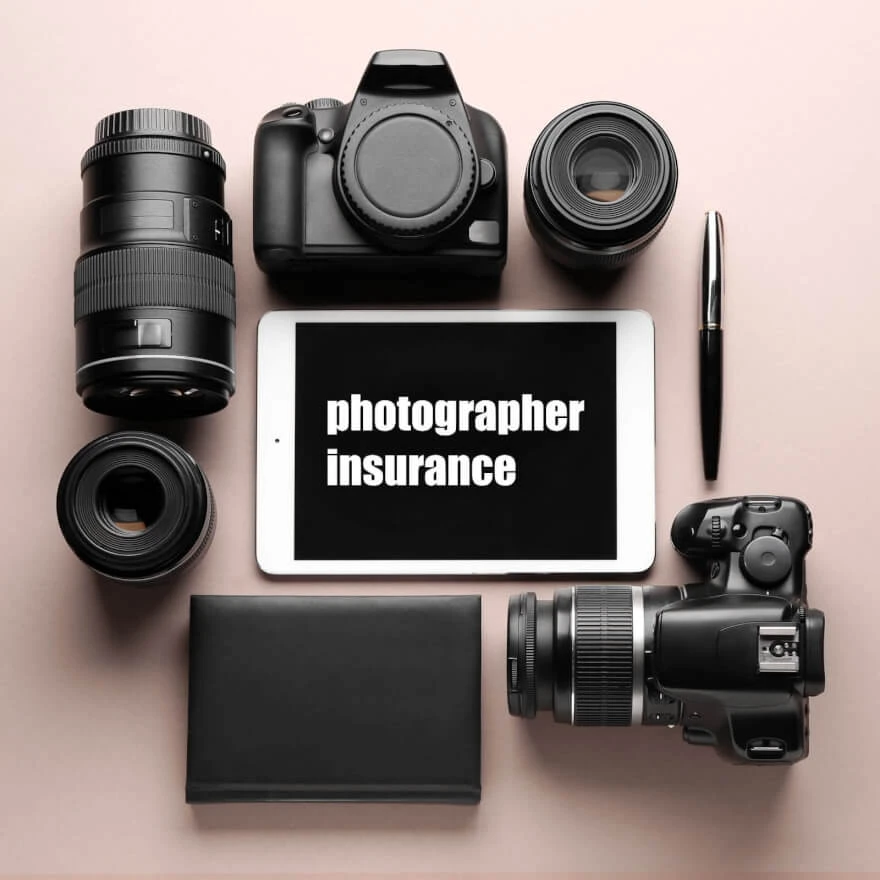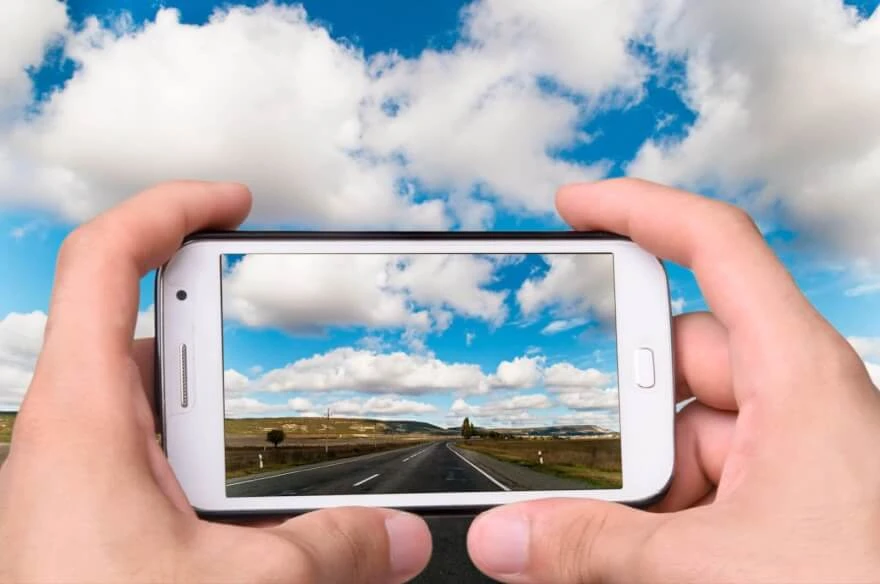Why do you need camera insurance?

- Value of Photographic Equipment
- What Photography Gear Insurance Covers?
- Choosing the Right Policy for Camera Equipment Insurance
- Cash Value and Gear Depreciation Cases
- Replacement Value
- Cost Differences
- Coverage Misconseption Cases
- Gear Stolen from a Car Case
- Homeowners and Renters Policy Issue
- Rented Camera Gear Insurance Case
- Camera Insurance for Travel
- Personal Liability
- In coverage:
- Issues not covered:
- How Much Does it Cost?
- Claim Process
- Initiation
- Documentation and Proof
- Evaluation
- Payment and Timeframe
- Conclusion
Have you ever thought about what would happen if your expensive camera gear got damaged or stolen? Professional photography is expensive, and most price tags just for the camera body are going up and beyond $1000. As a professional photographer, you are most likely to have a set of lenses and other fragile equipment that is crucial to your workflow. Today we will discover the value of photographic equipment, why photo and video equipment insurance is important, and what it covers, so you can make an informed decision and feel confident that you are choosing the right policy for your business.
Value of Photographic Equipment

Now, what would you need equipment coverage in the first place? Lenses, lighting, and other photography and videography gear can get really expensive and the cost of repairing or replacing it can be equally high. If your gear were to get damaged or stolen without the right insurance coverage you could be left to pay to replace it out of pocket. Additionally, no gear means no gigs, so the longer it takes you to save up to replace it, the longer you will be missing out on the income you would normally earn from your shoots. No gear, no shoots, and no income could be a huge problem if you have no coverage.
What Photography Gear Insurance Covers?

So, what does full-frame gear and equipment insurance cover? A full-frame gear and equipment insurance can cover your camera bodies, lenses, hard drives, lighting equipment, and more. Camera and lens insurance is a bare minimum for coverage, but that is not all. It can even cover things like prints and canvases you sell online or at events. It is important to note that this coverage is only for movable types of property. It is not designed to cover permanent or installed structures, trailers, vehicles, or studios themselves.
Choosing the Right Policy for Camera Equipment Insurance

While choosing the right policy for your gear and equipment insurance it is important to know the essentials. Understanding the risks associated with your equipment is usually outlined in your insurance policy, which can take up to 100 sheets of paper to read, and it's unlikely that anyone goes through all that documentation in detail. Looking for the best camera insurance there are two key points to consider.
Cash Value and Gear Depreciation Cases

When you are shopping for photography equipment insurance, you might notice that you have the option to ensure your gear for either actual cash value or replacement value. Actual cash value takes depreciation into account and provides coverage up to the current market value of the item. For example, if you bought a new lens for a thousand dollars and then had a claim three years later and that lens was now worth nine hundred dollars, your policy would cover that lens for the current value at the time of the claim - $900, because that is the current cost to replace the lens.
Replacement Value

Replacement value, on the other hand, does not take depreciation into account and can provide coverage for the original market value of the item. Using the same examples as before, if you bought your lens for a thousand dollars and had a claim three years later, it could still be covered for the original value of a thousand dollars even if the current market value of the lens is now only $900. Full frame insurance covers your gear for its actual cash value which is perfect for replacing the gear or equipment that was damaged or stolen with identical gear or equipment.
Cost Differences

Something to consider when you are making this decision is that a policy covering your gear for replacement value is usually going to cost you significantly more than a policy that replaces gear for actual cash value. So, although you may get a higher payout if you have a claim, you will almost certainly be paying a higher premium for that coverage. Also, remember that some gear depreciates a lot more than others. For example, a camera body will usually depreciate faster than a lens. To decide which is a better fit for you, it may help to consider what gear you have, how much it is worth, and how substantially and quickly that gear usually depreciates.
Coverage Misconseption Cases

There are different situations in life and understanding when your insurance will be effective and when it will not will allow you to avoid situations that are not in your favor. This section will discuss the cases in which your insurance will not work in your favor discovering most misconceptions that people may fall into.
Gear Stolen from a Car Case

Most policies will not cover mysterious disappearances of gear and equipment. Full frame gear and equipment coverage can provide some protection against stolen equipment but it does not protect against theft from an unattended vehicle or trailer unless the owner or an employee is within 10 yards, and only during the loading or unloading of equipment. So leaving your gear unattended in your vehicle is not recommended at all. Even if it is locked or hidden, or “only for a few minutes”, keeping it with you or in secure locations can help avoid the loss of your gear and can allow for your policy to offer you coverage in case of a claim.
Homeowners and Renters Policy Issue

A lot of professionals think that their gear is protected by their homeowners or renters insurance policy. But, most of these policies are limited and designed to protect only personal property. Homeowners and renters insurance policies usually exclude business equipment or at best have very low coverage limits for business equipment. If you use your gear for business, even to make just one dollar, a dedicated commercial policy with higher coverage limits is likely a better fit.
Rented Camera Gear Insurance Case

Full frame policy does not cover rented gear, it only covers business equipment that you own. But, rental shops often offer optional insurance on gear that you rent for them.
Camera Insurance for Travel

If you are into travel photography, when it comes to camera gear and equipment insurance within the context of travel protection, there are specific scenarios and cases that you may encounter. Here are examples of situations where travel protection for camera gear and equipment could come into play:
- While traveling, if your camera, travel tripods, or any other items in your kit are stolen from your hotel room or lost during transit, travel protection may provide reimbursement for the value of the stolen or lost equipment.
- Another scenario is when your camera is accidentally dropped and sustains significant damage while you are exploring a new location, Travel protection may cover the repair or replacement costs for the damaged equipment.
- Another scenario is if your checked baggage, containing essential camera gear, is delayed, causing you to miss scheduled photo shoots or assignments, some travel protection policies offer compensation for missed work opportunities due to baggage delay
Personal Liability

Personal or general liability refers to a type of insurance coverage that protects individuals against claims of bodily injury or property damage that they may cause to others. This coverage is not specific to camera gear and equipment but is a broader form of protection that can be included in various insurance policies, such as homeowners insurance, renters insurance that we mentioned earlier, or a standalone personal liability policy.
In coverage:
- Body Injury: If you are filming an event and accidentally trip someone with your camera equipment, causing them to fall and sustain injuries, personal liability insurance can cover their medical expenses.
- Property Damage: While on a photography shoot, you accidentally knock over an expensive piece of artwork, damaging it. Personal liability insurance can cover the cost of repairing or replacing the damaged property.
- If someone files a lawsuit against you claiming that your actions caused them harm, personal liability insurance can cover legal fees, court costs, and settlements.
Issues not covered:

- Intentional Acts: Personal liability insurance generally does not cover intentional harm or damage caused knowingly. If you deliberately damage someone's camera gear, it may not be covered.
- Business Activities: Personal liability insurance is designed for personal, and non-business activities. If you are using your camera gear for a professional photography business, you might need separate business liability insurance.
- Professional Liability: If you are sued for professional errors, such as delivering subpar work, personal liability insurance may not cover these instances. Professional liability insurance is more suitable for such cases.
It's crucial to consult with an insurance professional to ensure that you have the appropriate coverage for your camera gear and equipment based on your specific needs and professional activities.
How Much Does it Cost?

The cost of gear and equipment coverage varies based on the policy limits you choose, which usually depends on the value of your equipment. Usually, it starts from $50 - 60 a year just for the gear and equipment. But there is an addition to general (personal liability) which will significantly raise the price to $200 which will fully protect your business and gear. The deductible for gear and equipment varies based on your gear value. Let’s say you have $1K per item / $5K aggregate - this is about $50-60 per year. $2K per item / $20K aggregate is $130-150. So you can increase your limits as needed. Keep in mind, that as you increase your limits the premium will also increase to account for the initial gear protected under the policy. But regardless of the coverage limits you choose, the deductible stays the same.
Claim Process

The claims process for photo equipment insurance typically involves specific steps that policyholders need to follow. Here's an overview of the general process, along with some useful information:
Initiation

To initiate the claim in the event of steal, loss, or damage to your camera gear, promptly get in touch with your insurance provider. They typically have a helpline or an online claims portal. As you get on call, provide detailed information about the incident, including when and where it occurred. Have your policy details, receipts, and comprehensive documentation for the camera equipment readily available.
Documentation and Proof

To support your claim, submit proof of loss. This might involve providing police reports for theft, repair estimates for damaged equipment, or a document establishing the value of lost or stolen items. Maintain meticulous records of your camera gear, including serial numbers, photos, and purchase receipts. This documentation is crucial for a smooth claims process.
Evaluation

The insurance provider will evaluate the details of your claim, reviewing the documentation and assessing the circumstances surrounding the loss, theft, or damage. The insurer will decide whether the incident falls within the coverage of the policy, verifying the cause of the loss and ensuring it aligns with policy terms. Following the evaluation, the insurer will communicate the decision to either approve or deny the claim. If approved, details about the settlement amount and process will be provided. In cases of denial, the insurer will usually offer a clear explanation, citing specific policy terms or circumstances that led to the decision.
Payment and Timeframe

For approved claims, the insurer will initiate the settlement process, which may involve reimbursement for the value of the lost, stolen, or damaged camera equipment. The timeframe for the claims process varies by insurance provider, depending on factors such as claim complexity and the completeness of documentation. Inquire about the expected timeline when initiating the claim. Swiftly reporting incidents and providing thorough documentation can expedite the claims process.
Conclusion

This comprehensive guide can serve as valuable information for individuals seeking to navigate the claims process for camera gear and equipment insurance in a general context.
Be aware of how the insurer assesses the value of your camera equipment; some policies may factor in depreciation. Consider reviewing what your insurance covers within personal liability, business use, and travel protection, and read your plan and all the documentation thoughtfully.
Co-founder of RetouchMe. In addition to business, he is passionate about travel photography and videography. His photos can be viewed on Instagram (over 1 million followers), and his films can be found on his YouTube channel.
Moreover, his profile is featured on the most popular and authoritative resource in the film industry — IMDb. He has received 51 international awards and 18 nominations at film festivals worldwide.

with RetouchMe














